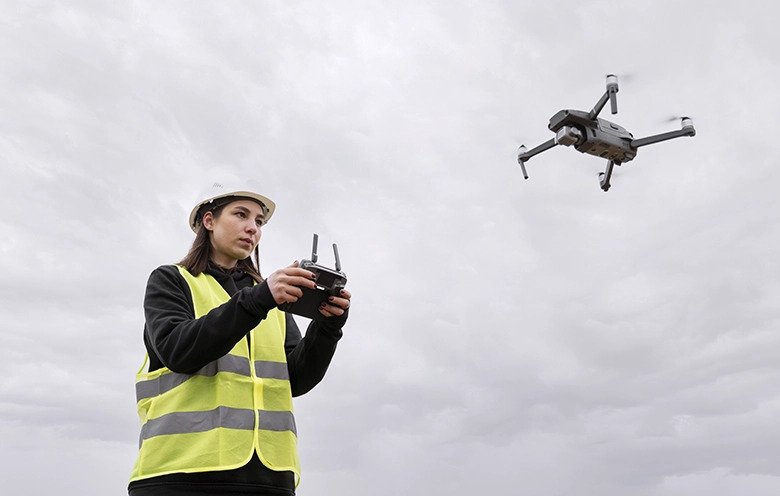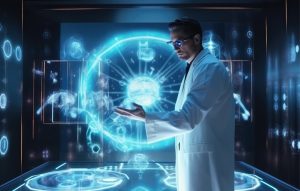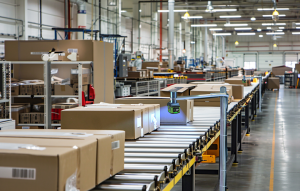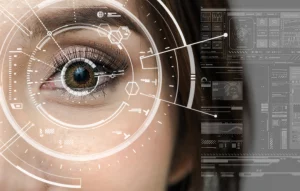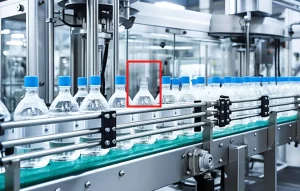Autonomous flying machines or drones were commonly used for aerial photography and videography. However, when these drones are powered by artificial intelligence (AI), computer vision, machine learning (ML) and other advanced technologies, they can take your business to a new level. They can collect, store and process data instantly in real-time. This mix of technologies allows companies to optimize workflows and performance while improving output.
The global commercial drone market is projected to grow from $8.15 billion in 2022 to $47.38 billion by 2029, at a CAGR of 28.58% in the forecast period. – Fortune Business Insights
From inspecting to monitoring, use cases for computer vision in AI drones are numerous. Drones are capable of capturing images or videos in real-time. By leveraging ML algorithms, you can train drones to analyze the data at the edge and run diagnostics. Furthermore, organizations can use these insights to make savvy business decisions.
What are some common computer vision use cases for artificial intelligence drones?
Smart farming
The combinational power of AI, ML and computer vision can help farmers to evaluate field conditions, soil moisture, identify crop disease, predict weather and crop yields. With the footage captured by AI-powered drones, farmers can monitor crop growth in real-time. The ML models can help them in predicting yields and identifying crop losses due to disease, insects, or natural conditions.
According to 2021’s agricultural drone usage survey, 12-acre land can be overlooked and controlled by a drone instead of the traditional way. This will save the business 98% of its expenses. – Seed Scientific
Farmers must take proactive measures to protect their crops from any disease or other natural conditions. Computer vision-enabled drones can help them to identify crop defects and sort the following factors of the produce:
- Weight
- Color
- Size
- Ripeness
Drones with computer vision models can help farmers to track their livestock. This means, farmers can monitor their livestock, identify injured or missing animals in their pasture and address the issues with utmost priority.
Industry 4.0
Manufacturers and factory owners can leverage a combination of video, thermal imaging and advanced image recognition technology to:
- Improve performance
- Enhance safety on-site and
- Reduce inspection times
However, one of the key use cases of drones with computer vision is asset monitoring.
Valuable business-critical assets need the highest level of maintenance. Drone-assisted data analysis provides guided, automated, IoT-driven inspections. Industrial applications of computer vision drones offer manufacturers dynamic and real-time data to build a robust data repository for long-term analysis. This in turn helps companies to plan a timely maintenance strategy and take proactive measures.
Smart cities
Smart cities connect people and communities by using technology. AI-powered drones with computer vision can help authorities to collect and share data for increased productivity, sustainability, efficiency and growth.
Smart drones can be used for the delivery of goods. In fact, many companies like Amazon and FedEx are already using AI-enabled autonomous drones to fly individual packages to their customers.
The global drone package delivery market was valued at $0.94 billion in 2021 and is projected to reach $32.1 billion by 2031. – Allied Market Research
Apart from autonomous deliveries, drones can be used for various purposes, including natural disaster control and monitoring, crowd management, etc. Moreover, with these AI-powered drones, police authorities can keep tabs on the crowd during any event using drones. They can even send drones to identify suspects on the streets or in a market full of people.
Moreover, these advanced technology-based drones can reach in areas that humans cannot reach during natural calamities and can gather the required data for the authorities to take necessary actions.

A complete guide to computer vision for quality control in manufacturing
Whether you want to learn how to design a computer vision system for quality control (just by following six steps) or know how to use computer vision solutions for quality control in manufacturing, your answers are just a download away from this whitepaper.
Computer vision models
Image classification
Machine learning algorithms are trained by feeding labeled image data to identify the input data that is not labeled. Such models are called image classification. With these models, companies can predict which class the image belongs to.
A few use cases of image classification are keyword classification and image search. Drones with deep neural networks (DNN), trained with image classification models, can help organizations to identify people or objects in the images fed to them. Then, they can analyze those images and share the results in real-time.
Object/landmark detection
Computer vision and remote sensing have enabled drones with computational power for advanced object detection and tracking. Hence, you can train deep learning-based unmanned aerial vehicles with structured datasets to identify objects while in surveillance.
3D object identification is a vital function that DNN-based drones possess. The camera with a trained computer vision model can scan an object after uploading relevant data into the app using 3D object detection. This allows companies to identify potential threats or items in question in real-time.
Facial recognition
Drones with 3D sensors help to capture 3D face images and track a person’s face in real-time with improved precision. These algorithms are useful in developing real-time face detection applications that identify an individual in diverse poses, lighting and expressions.
There are mainly two types of algorithms – holistic and feature-based. In a holistic approach, the entire face is considered as input. Whereas, in feature-based models, facial features like eyes, nose, shape, etc. are taken into consideration.
Edge detection
Edge detection works on the principle of brightness. Drones powered by edge detection can help organizations to find the boundaries of objects within images using an image processing technique.
This technique is mainly useful for:
- Pattern recognition
- Image morphology
- Feature extraction
Pattern detection
Pattern recognition has a variety of applications, including image processing, speech and fingerprint recognition, aerial photo interpretation, optical character recognition, etc. Drones with pattern detection algorithms can help to identify patterns or abnormalities in data captured as images or videos in real-time.
Feature matching
Computer vision-enabled drones can allow companies to recognize features of the same object across different images with slightly different viewpoints. The primary objective of this algorithm is to find or derive attributes from the source to the target image. This can help organizations in theft detection, motion tracking and more.
What is the role of data scientists in model training?
Computer vision works through high-performance, onboard image processing using neural networks. When drones are trained with computer vision models, it enables them to detect objects while airborne. Moreover, it also helps in the analysis of the recorded information on the ground.
For successful execution of such scenarios, it is essential to train the models efficiently. To implement DNNs in drones, data scientists must train the ML algorithms first to recognize and aptly classify objects in a wide range of contexts. This is especially done by feeding marked or labeled images/videos in the algorithm.
One of the key responsibilities of a data scientist is to conduct quantitative and qualitative data analytics to help companies make insights-driven decisions. Hence, it is crucial to hire data scientists with the utmost knowledge, expertise and experience in the field of data analysis. From strategizing and planning to designing and implementing, data scientists must possess the ability to predict risks and mitigate them simultaneously.
Read more to understand how to transform your organization’s data ecosystem.
Adopt the transformational capabilities of computer vision-powered drones
AI-enabled drones empower businesses by offering the following benefits:
- Increased safety
- Improved productivity
- Automated quality assessment
- Optimize operations
- Efficient monitoring of assets
Computer vision in AI drones has a variety of purposes. However, it is essential to identify and train the right model to improve the efficiency of your use case. Hence, it is imperative to choose the right computer vision services provider.
If you are exploring the idea of implementing AI-enabled drones powered by computer vision, our team of experts can guide you through the process and planning. Contact our computer vision experts to know more about computer vision drones.


